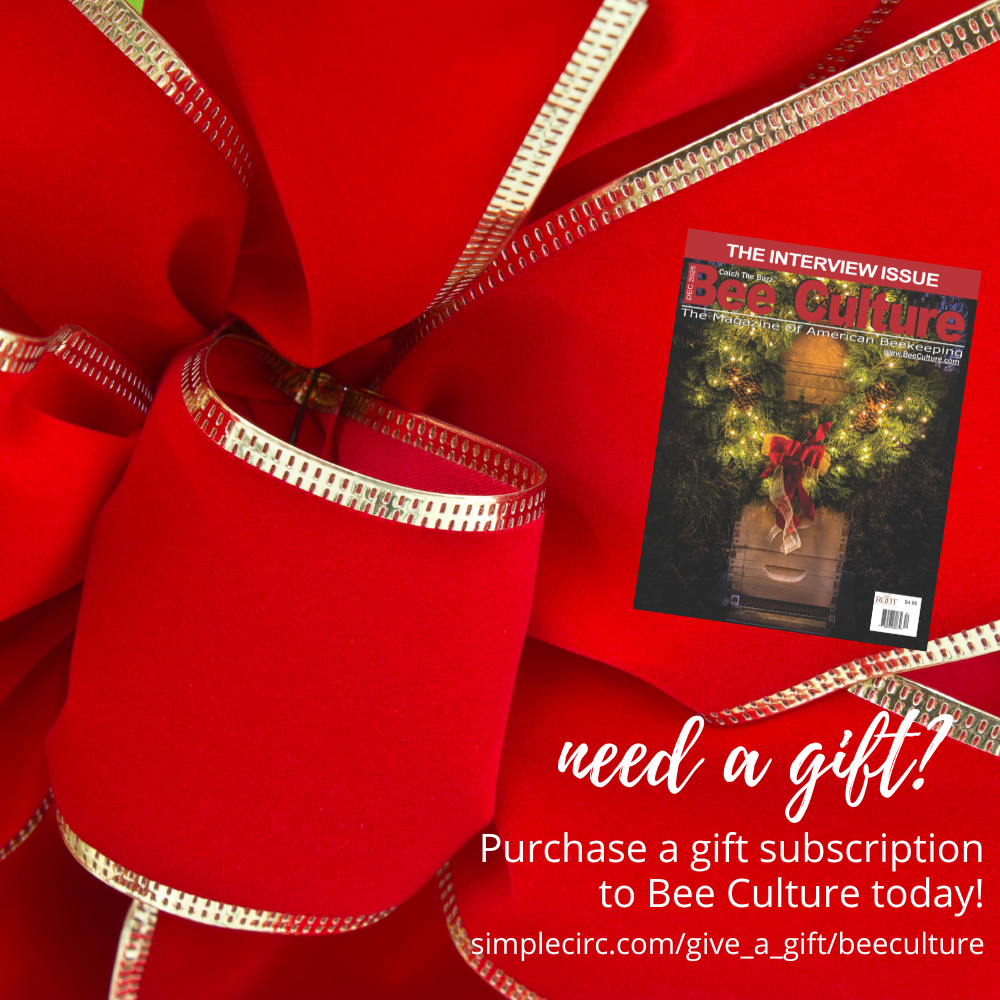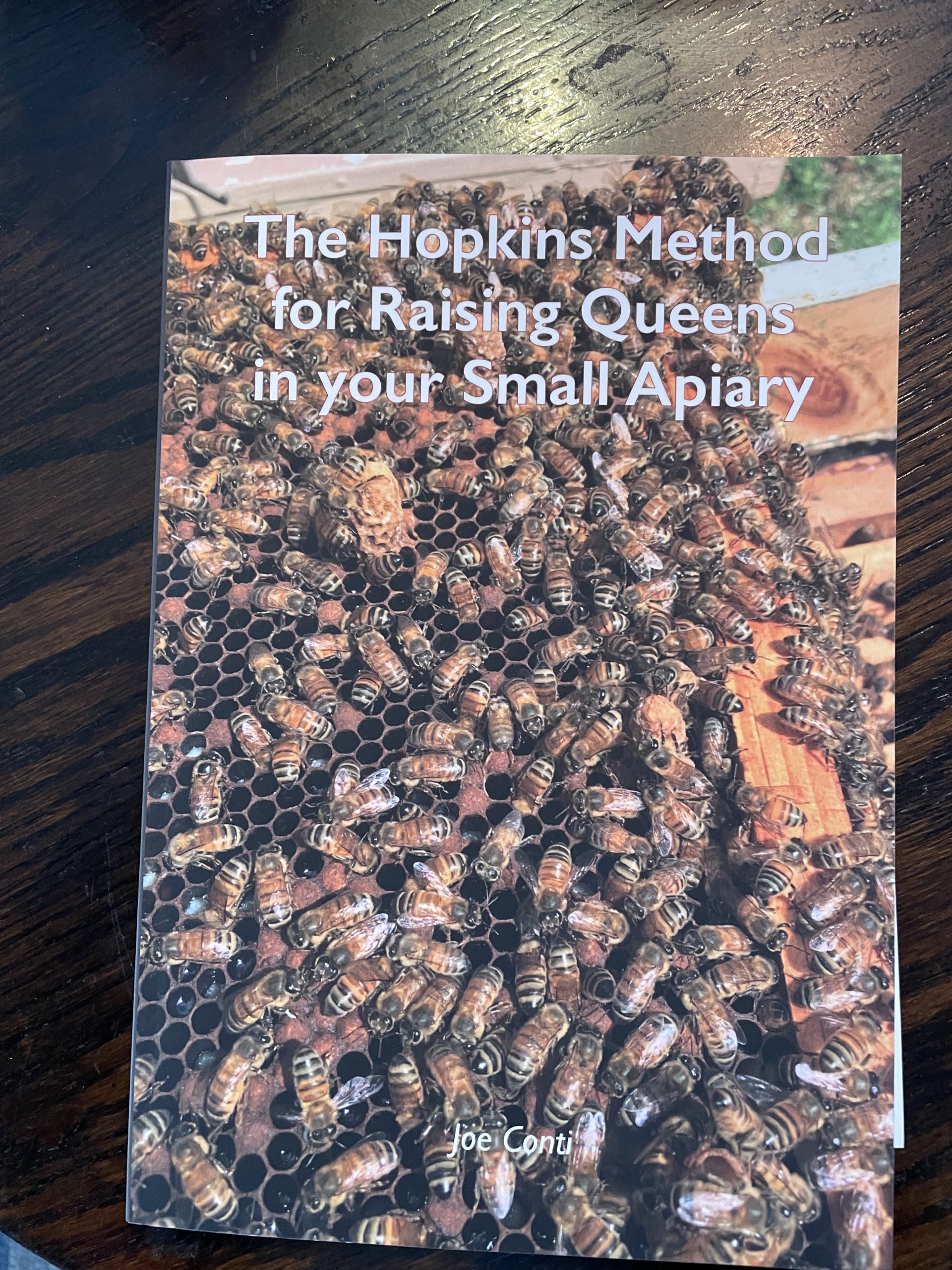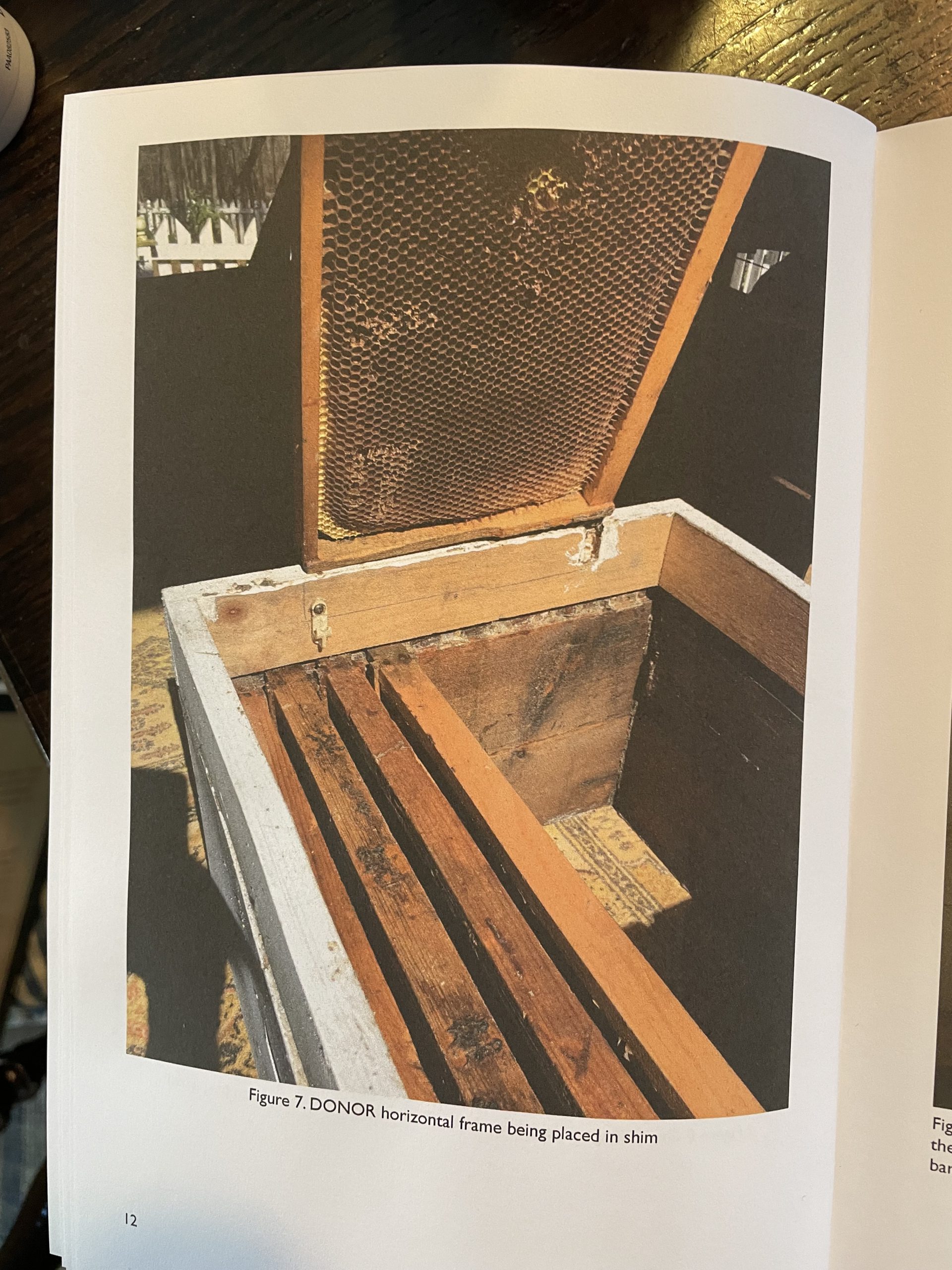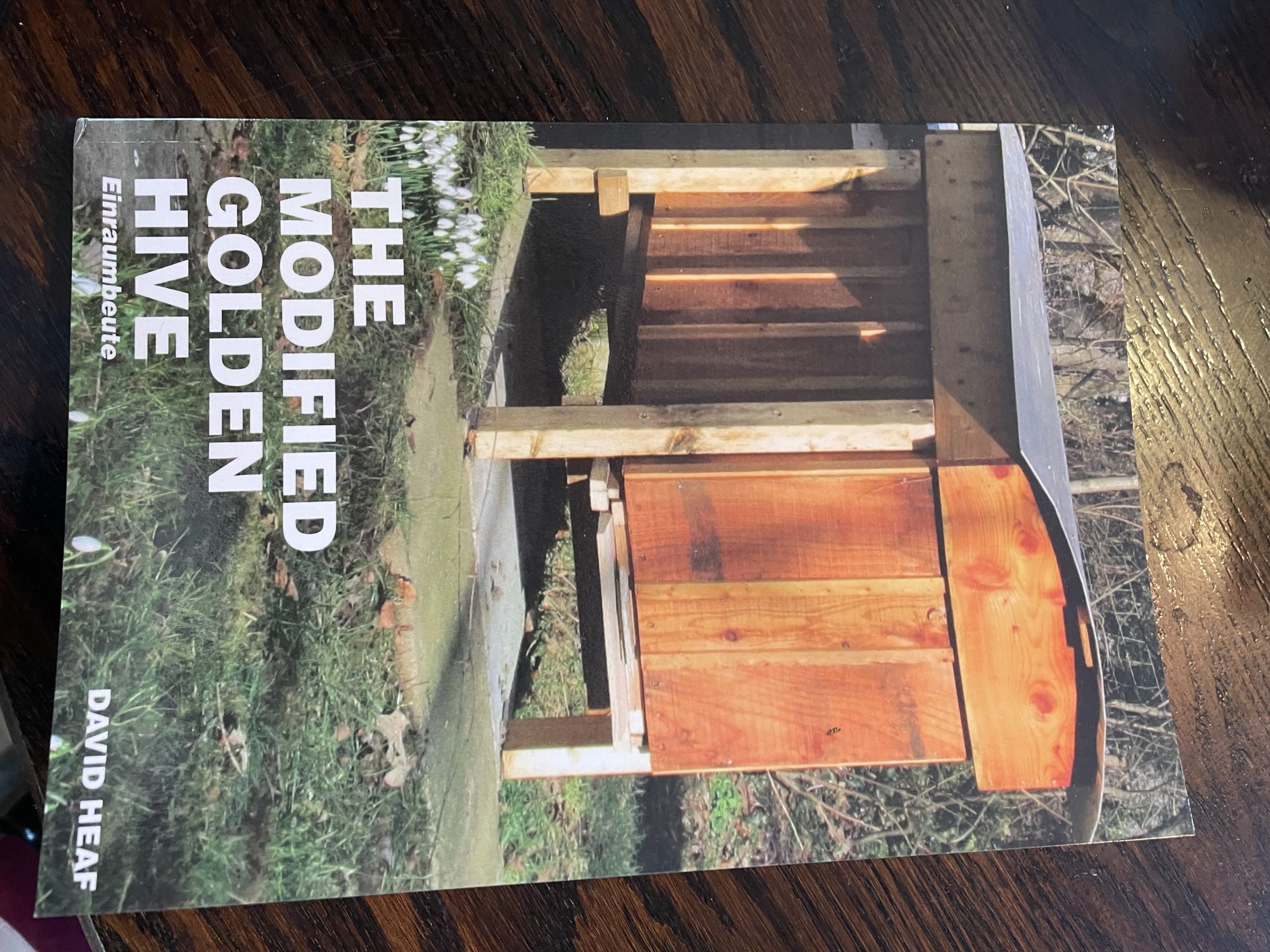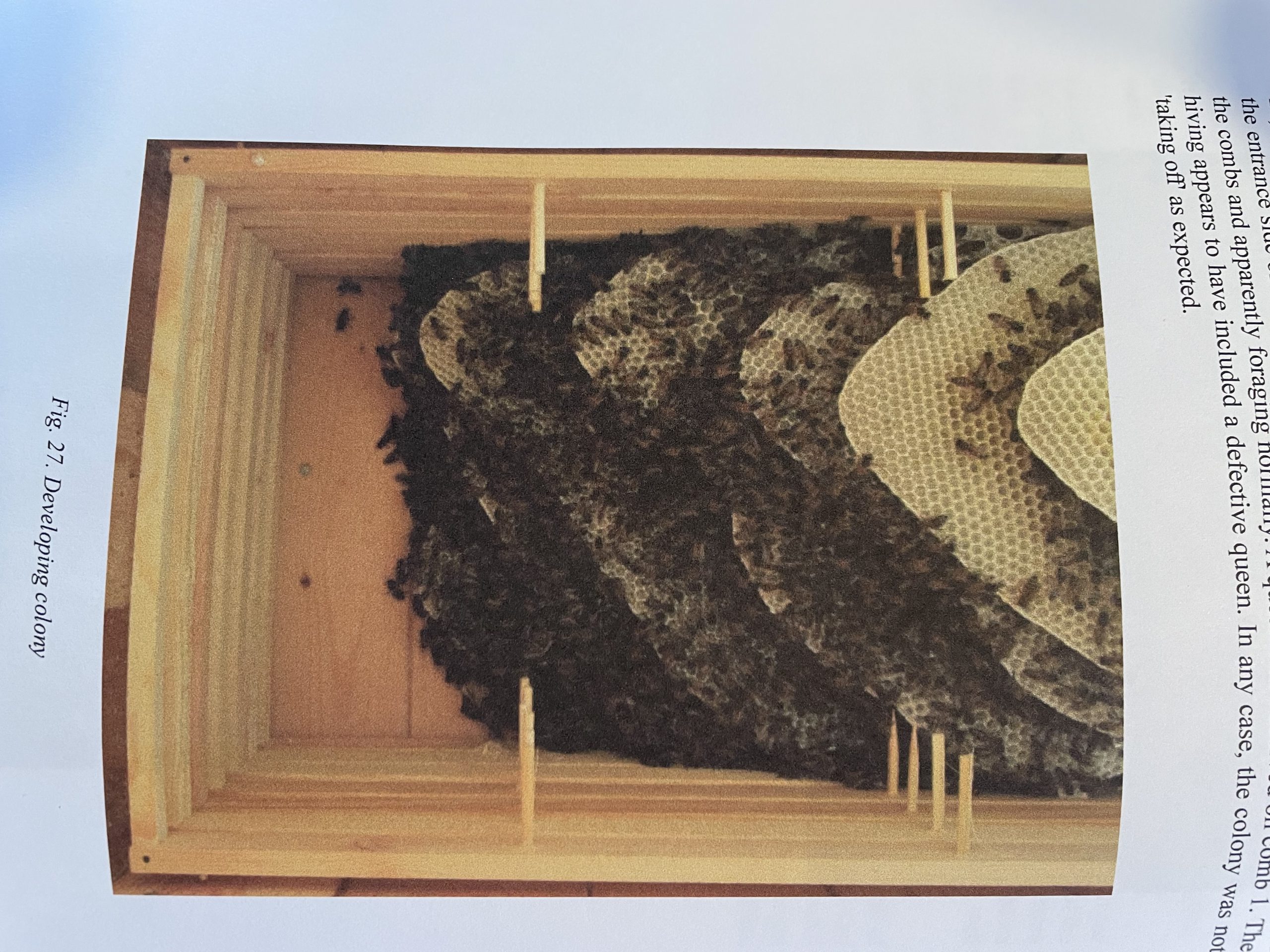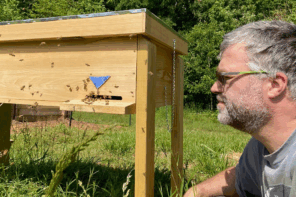The Hopkins Method for Raising Queens in your Small Apiary. By Joe Conti. Published by Northern Bee Books. ISBN 978-1-914934-25-4. 38 pgs. 9.5” x 6.5”. Color throughout. $14.00 from the publisher or Amazon.
Joe Conti has a MS degree in Wildlife Ecology from the University of Florida and worked as a Wildlife Biologist specializing in wildlife diseases at both the Universities of Florida and Georgia. He has published on a variety of issues related to wildlife, including a recent article in the American Bee Journal on this queen rearing technique.
The two photos below show how fundamentally simple this technique is to raise a few queens. Basically, you remove a frame, from the hive you are going to use, or from another with different genetics, and place it in a shallow super equipped with appropriate holders to keep the frame a bee space above the frames in the box, but lying on one side, not hanging in the super. The hive is rendered queenless a short time beforehand. The bottom side of the comb containing eggs and larvae is then very close to the brood nest of the hive, and accessible to the bees to pick and choose which larvae they will use to raise their new queen from. Another super is added above the box with the frame, and when ready, the frame is removed and the queen cells removed from the comb and placed in a queenless colony to finish. No grafting, no cell bars, cell cups, queen cages, or other tools or equipment needed. It is a remarkably easy technique to use, and, without expensive equipment or a stressful management schedule to follow. You’ll have to build the box that holds the frame, and all that is required is a notch on each side to hold the frame lug, and something to keep the bottom of the frame even with the top. And a simple nail does that nicely. But that’s all the equipment you will need.
Kim Flottum
The Modified Golden Hive, by David Heaf. Published by Northern Bee Books. Isbn 978-1-914934-24-7. 9.5” x 6.5”, color throughout, 37 pgs., $14.00 available from the publisher and Amazon.
Horizontal hives with frames are becoming increasingly popular in Europe and North America. One of these is the golden hive or Einraumbeute, developed at Mellifera Association in Germany, based on Dadant-size frames rotated ninety degrees in the box. The resulting deep format allows for a vertically uninterrupted brood nest and a deep honey crown that is good for wintering.
The author, who lives in the UK, switched from using UK National hives, using conventional management to what he felt was a more natural style, and equipment, using a conventional Warre style hive. The Golden Hive is similar in design and management.
This book describes modifications to the golden hive to buffer the colony against heat/cold extremes as does a tree cavity. With the help of many pictures, details are given of how to make the hive, followed by highlights of running it untreated for varroa over six seasons. A few other modified golden hive projects are also mentioned.
Kim Flottum

